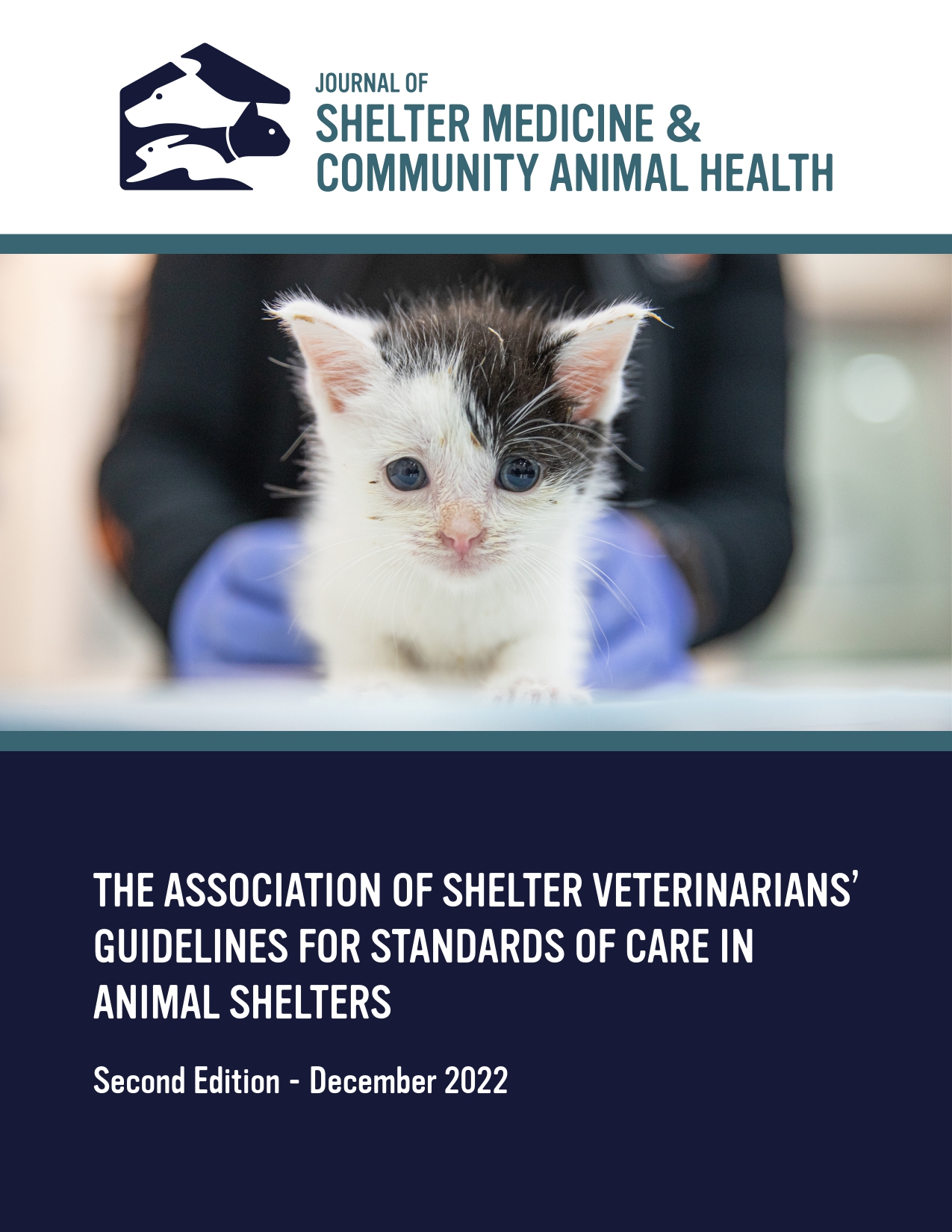Key factors in Shelter Veterinary job satisfaction: implications for Access to Veterinary Care in shelters [Abstract]
DOI:
https://doi.org/10.56771/jsmcah.v4.138Abstract
Introduction
Extensive negative impacts of the Access to Veterinary Care crisis have been documented in U.S. animal shelters, including prolonged length of stay, reduced adoptions, higher disease levels and increased euthanasia1. Simultaneously with developing long term strategies to remedy this crisis, near term solutions are urgently needed. Increasing shelter veterinary job satisfaction and retention could provide some short-term relief as well as being a necessary underpinning of any long-term approach – no amount of newly trained veterinarians will help the sector if shelters are unable to retain these individuals. The authors hypothesized that specific factors linked to shelter veterinary job satisfaction could be identified that would guide shelter leaders and other stakeholders to improve retention of veterinarians already engaged in the field and lay the foundation for more successful recruitment in the future.
Methods
In partnership with the University of Tennessee Pet Health Equity Program, a questionnaire was developed with input from practicing shelter veterinarians in a variety of roles (e.g. leadership, staff, contract) and working in a variety of shelter contexts (government, non-profit with government contract, non-profit without contract). The questionnaire included demographic questions and questions about factors negatively and positively impacting job satisfaction. This questionnaire was distributed electronically through a variety of mailing lists to veterinarians practicing in any California animal shelter. Veterinarians were also asked to forward the survey to their colleagues.
Results
Ninety-four California shelter veterinarians completed the survey, representing a mix of staff veterinarians (61%), veterinarians in leadership roles (17%), contract veterinarians (16%) and “other” (6%). Respondents had been practicing as veterinarians for an average of 18 years, in shelter medicine specifically for an average of 8 years. Forty-three percent of respondents worked for government-funded shelters, while 32% worked for non-profits holding a government contract and 25% for non-profit shelters without a government contract. The three most common factors rated as having the greatest negative impact on job satisfaction were: lack of support staff/inefficient work processes (42% of respondents); inability to provide for the behavioral needs of animals/inability to provide care due to crowding (22% of respondents) and challenging working relationships with shelter leadership (15% of respondents). Fourteen percent of respondents cited lower salaries in shelters compared to private practice as the single most important factor leading to negative job satisfaction. Additional factors identified as having the greatest negative impact on job satisfaction included inflexible work hours, long work hours, after-hours work, and lack of opportunity for advancement. These factors accounted for less than 10% of respondents each but bear mentioning as they may be amendable to intervention. Overwhelmingly the single biggest positive factor impacting job satisfaction was the belief that “I am making a meaningful impact on the lives of animals”, accounting for 76% of responses.
Conclusion
These survey results provide immediately actionable information for shelter leaders, animal welfare funders, and other key stakeholders to improve retention of shelter veterinarians now working in the field, and by extension, improve the ability to recruit and retain future hires. Importantly, although compensation relative to private practice was identified as the most important barrier to veterinary recruitment by the majority of shelter leaders responding to a national survey2, pay was not the most crucial factor in job satisfaction identified by the majority of respondents to our survey. Therefore, a focus on resolving pay disparities between shelters and private practice, while potentially helpful and in some cases essential, will not be adequate to fully address the significant challenges facing shelters in retaining skilled veterinarians. Rather, many of the responses reflected veterinarians’ strong drive towards using their professional expertise to work efficiently and effectively, providing shelter animals with appropriate care and maintaining a reasonable standard of welfare for the population, and working in a collegial and mutually respectful environment. Ultimately, shelter veterinarians’ commitment to making a meaningful impact on the lives of the animals in their care must help guide interventions, even as other improvements to working conditions, such as increased pay or more flexible hours are offered.
Given the acute shortage of licensed veterinary technicians, addressing the gap in support staff is not entirely within shelter leaders’ hands. However, more attention to work efficiencies, allowing all licensed staff to work to the highest level of their license; utilization of non-licensed veterinary assistants to the greatest possible extent; and ensure hiring and sufficient training for all staff involved with animal care and flow can support greater effectiveness for veterinarians and their teams. At the same time, the negative impact of shelter crowding in exacerbating the veterinary shortage in shelters should not be underestimated. Most obviously, more animals results in more strain on existing medical staff, exacerbated by the increase in illness that almost always accompanies crowding. When it is not possible to increase support staff, relieving crowding can significantly help align workload with capacity. This will have the added benefit of improving the behavioral welfare of animals and overall level of care for the population, a significant factor in veterinary retention in itself (as well as being a central goal of most shelters). Advocating for policy that empowers shelter leaders to balance the incoming population with the organization’s capacity to provide safe, humane care and ensure appropriate outcomes is a near term policy solution with wide ranging benefits, including improving the retention of committed, talented shelter veterinarians and providing an attractive work environment for incoming new graduates as the profession expands.
Financial Support and Conflict of Interests Funding for this research was provided by California For All Animals (grant funds allocated by the California legislature and administered by the Koret Shelter Medicine Program at UC Davis) and the San Francisco SPCA, programs directed by authors Kate Hurley and Jennifer Scarlett respectively. This funding did not create any conflicts of interest.
Downloads
References
1. Access to Veterinary Care in California Animal Shelters, California Access to Care Working Group and the Program for Pet Health Equity. (2022) https://storymaps.arcgis.com/stories/5ae46f84f8c3438d9c32126d54681936
2. Access to Veterinary Care and Animal Welfare Organizations, The Association for Animal Welfare Advancement and the Program for Pet Health Equity. (2023) https://theaawa.org/wp-content/uploads/2024/06/2023-Access-to-Veterinary-Care-Animal-Welfare-Organizations.pdf
Published
Issue
Section
License
Copyright (c) 2025 The Authors

This work is licensed under a Creative Commons Attribution 4.0 International License.










